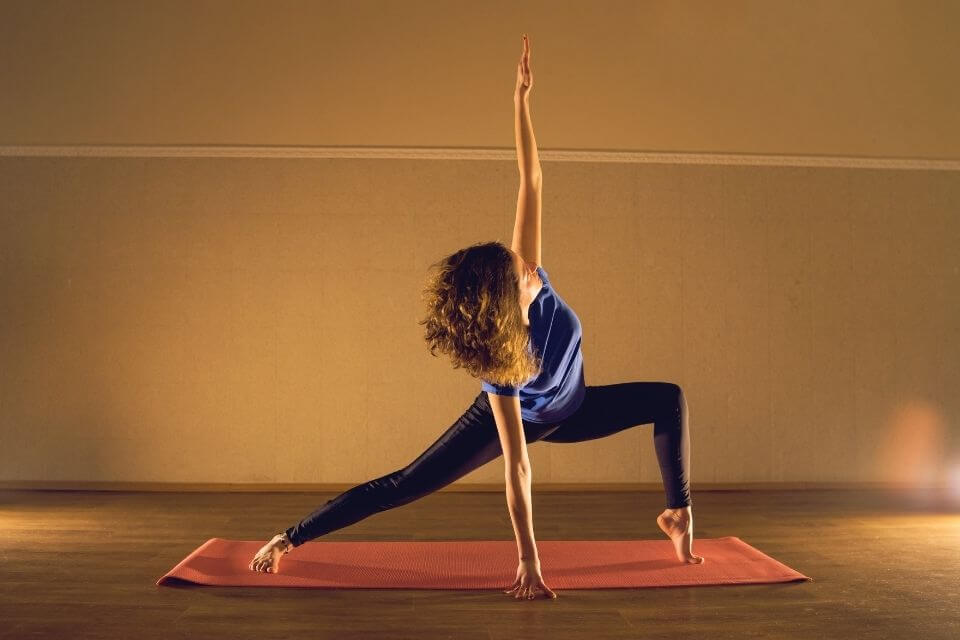
Yoga has been practiced by yogis worldwide for more than 5,000 years ago, and it is said to have originated in India. Throughout the years, yoga has been able to develop into different styles and forms. There are many different kinds of yoga, and it may not be easy to decide which best style is for an individual. As experiences per style vary, it is best to try out different yoga styles before deciding which one is the best for you. Power Yoga versus Vinyasa yoga, what is the difference and similarity between the two yoga styles.
Learn more about the power vinyasa yoga benefits and how it can improve your health.
What is power vinyasa yoga?
Power vinyasa yoga is a physically demanding and powerful style of yoga that links breath with movement. This style of yoga is based on the Ashtanga Yoga system. It is a vigorous and sweaty form of yoga that builds heat and strength.
What is Power Yoga?
Power Yoga is one of the most popular yoga types in the United States. It usually varies from class to class; it always depends on the instructor. It was developed during the 1990s, and Beryl Birch, Bryan Kest, and Baron Baptiste are considered the credited founders of Power Yoga. In power yoga, the goal is to create a high level of energy and strength. By working and knowing your true self, you will work hard and break out to achieve freedom within yourself. There have been instances that athletic and competitive individuals have been attracted to Power Yoga since it’s an intense and fast-paced version of ancient yoga.
Power yoga is sometimes called gym yoga. It is perfect for fitness lovers who prefer energetic classes and love to sweat. It is known for an ideal combination of stimulating, exhilarating, and at the same time, relaxing effects for yogis. Yoga has been modified with intense and fast-paced flowing versions of yoga for the newer generation. If you prefer a mind-blowing and life-changing experience in yoga, Power Yoga might be perfect for you.
Power yoga is also described as a vigorous version of vinyasa yoga. It started as a resemblance of ashtanga yoga, and it was remade to make it easily accessible for the newer Western students and gym-goers. As the style per class might differ, make sure to check with the instructor or studio before joining their class.

Benefits of Power Yoga
Power yoga is influenced by aerobic exercise. It is a perfect combination of high intensity, calorie-burning style, and it also focuses on the body, mind, and spirit aspects like ancient yoga. Power yoga increases body strength, improves flexibility, and helps with weight loss and weight management.
It also improves an individual’s stamina and corrects posture while greatly improving the stability and balance of a person. Power yoga has been noted to enhance blood circulation and immune health. It can make the heart healthier and improve one’s muscle and bone strength. Mental benefits from power yoga often include enhanced mental concentration and reduced mental stress.
What is Vinyasa Yoga?
Vinyasa yoga, also known as ashtanga yoga, has origins that trace back to a yogi named Sri Tirumala Krishnamacharya. Vinyasa means a movement that uses different poses that are usually paired with regulated breathing. Since vinyasa yoga pairs the breath with smooth transitions from one pose to another, Vinyasa is sometimes also called vinyasa flow. It’s typically a faster-paced class that can be vigorous and even dance-like. Vinyasa yoga classes usually differ from one class to another, so it might be a good idea to consult the studio before enrolling in a class.
Vinyasa yoga is often associated with Ashtanga or Power yoga because of its fast pace. Vinyasa yoga usually incorporates different series of poses called “Sun Salutations” that flow from one pose to another, which greatly serve as nice warm-up exercises for its practitioners.

Benefits of Vinyasa Yoga
As everyone knows, Vinyasa is referred to as flow style yoga, and it offers many benefits for an individual. Vinyasa yoga is known for improving flexibility, mental focus, cardiovascular health, and muscular strength. It also facilitates calorie-burning, which can significantly help facilitate weight loss and weight management. Vinyasa is well-known for being one of the yoga styles that burns the most calories, making it a great cardio workout. By attending a 1-hour fast-paced Vinyasa session, an individual can usually lose 450 or more calories. When performing Vinyasa yoga, one of the poses resembles a push-up-like motion which greatly improves an individual’s upper body strength; it helps with the toning of muscles and enhances one’s functional strength. Vinyasa yoga helps build lean muscles throughout an individual’s body. When it comes to stress management, Vinyasa yoga is also known to reduce a person’s stress. It also helps with proper breathing, which greatly affects the respiratory system and results in healthy lungs.
Differences Between Power Yoga and Vinyasa Yoga
The 3 primary differences between power yoga and Vinyasa flow are:
- Strength and flexibility requirements
- Number of poses and how long they are held
- Body and/or breath awareness
Conclusion
Power yoga and Vinyasa have similarities in the technique. Still, in general, there are differences between the two: In power yoga, the poses are fewer and held longer compared to Vinyasa, wherein the poses are moved quickly like a dance-like sequence.
Power yoga is more focused on improving strength when it comes to flexibility and strength, as it is reflected with the poses being held longer. On the other hand, Vinyasa is focused on enhancing an individual’s flexibility as the poses are done in a fluid, continuous movement. Regarding the body and breathing concept, the power of yoga is greatly focused on the individual’s body, while Vinyasa is more focused on the breathing technique.
